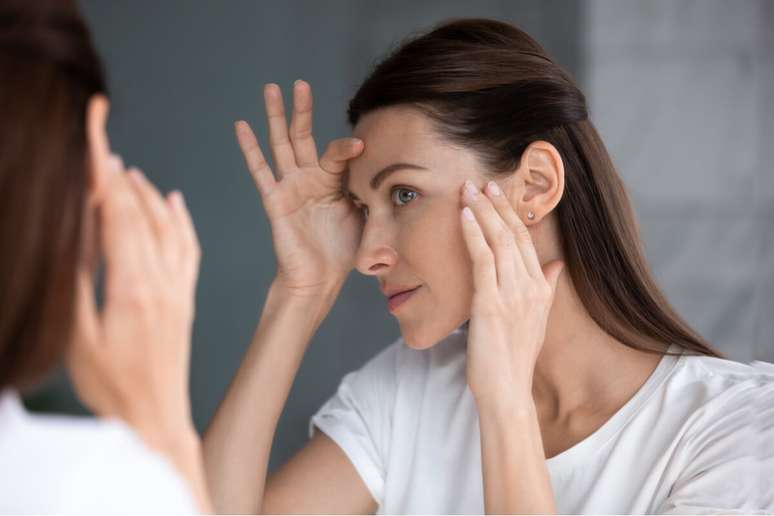Premature aging and nail and hair diseases are among the most common problems that can affect smokers
Cigarette use is highly harmful to both general health and skin. Cigarette smoke contains a mixture of toxic substances and chemicals which, when inhaled, adversely affect many organs in the body, including the lungs, heart and skin. Therefore, quitting smoking is extremely important.
html[data-range=”xlarge”] figure image img.img-4f26204697dba8afe13f66f14435e3bdv68mmv21 { width: 774px; height: 516px; }HTML[data-range=”large”] figure image img.img-4f26204697dba8afe13f66f14435e3bdv68mmv21 { width: 548px; height: 365px; }HTML[data-range=”small”] figure image img.img-4f26204697dba8afe13f66f14435e3bdv68mmv21, html[data-range=”medium”] figure image img.img-4f26204697dba8afe13f66f14435e3bdv68mmv21 { width: 564px; height: 376px; }HTML[data-range=”small”] .article__image-embed, html[data-range=”medium”] .article__image-embed {width: 564px; margin: auto 0 30px; }
“Within skin health, quitting smoking is essential to slow aging, minimize smoking-related surgical and dermatological complications, and improve overall health conditions that directly affect skin tissue,” explains the dermatologist. Dr. Paola Pomerantzeff, member of the Brazilian Society of Dermatology.
Subsequently, the doctor highlights the 10 main skin manifestations caused by the use of cigarettes. Watch!
1. Difficulty healing wounds
Cigarette smoking has been repeatedly shown to have deleterious effects on skin wound healing. “Cigarette smoking has been associated with numerous postoperative complications, including wound infections. When using flaps or grafts, smokers are at an increased risk of necrosis. This occurs basically for three reasons: vasoconstriction, prothrombotic effects and inflammation,” explains the doctor.
2. Wrinkles and premature aging
The association between smoking and wrinkles has long been known. “Clinical features of a ‘smoker’s face’ have been described in studies and include: prominent facial lines, relief of underlying bone contours, dry, reddened skin. Women, according to studies, appear to be more susceptible to the effects of wrinkles caused from smoking compared to men. Smoking is an independent risk factor for wrinkles, however exposure to the sun has an effect that enhances skin aging”, explains Dr. Paola Pomerantzeff.
3. mouth problems
Tobacco has been shown to be an independent risk factor for oral squamous cell carcinoma, a cancer that develops in the mouth. In addition, smoking is associated with the appearance of gray spots on the gums and cheek walls, as well as with gingivitis, periodontitis and painful palatal erosions.
“Smoking also contributes to the appearance of wrinkles on the lips, as it helps to destroy the skin’s support fibers and collagen, causing the appearance of the barcode,” warns the dermatologist.
4. Nail and hair diseases
Smoking has been linked to several ailments hair and nail disorders, such as androgenetic alopecia, premature gray hair, smoker’s nails, and bleached facial hair. “Cigarettes substantially damage blood circulation and, consequently, oxygenation and the supply of nutrients to peripheral tissues, including skin, nails and hair,” explains the doctor.
Again according to the specialist, the toxic substances present in cigarettes also cause a highly inflammatory state, sensitizing the area which can suffer from irritation, seborrheic dermatitis, thinning, breakage and hair loss.
5. Acne inversa
Acne inversa, called hidradenitis suppurativa, is a skin condition that occurs more often in smokers. “Usually confused with boils or large pimples, hidradenitis suppurativa is a chronic inflammation of the skin characterized by the appearance of deep swellings and cysts in regions such as the armpits, breasts, groin, genitals and buttocks, which release purulent secretion and cause discomfort and pain.”, explains Dr. Paola Pomerantzeff.

6. Psoriasis
Smokers are at a higher risk of developing psoriasis and have lower rates of clinical improvement with treatment. “In this common autoimmune disease, the body recognizes a normal protein in the skin as abnormal and tries to get rid of it causing the skin to peel. This results in large plaques, thick and scaly that crack and bleed and can be painful and itchy,” says the dermatologist.
The areas of impact can vary, but some of the most sensitive are the scalp, face, genitals, and nail. “Patients who smoke are more likely to have more severe disease. Palmoplantar pustulosis, a variant of psoriasis, has been shown to have a stronger association with smoking,” she explains.
7. Lupus
The development of systemic lupus erythematosus, as well as increased disease severity, have been associated with smoking. “Moreover, smoking significantly impairs the treatment of the disease by directly interfering with the effectiveness of the drugs,” he says.
8. vascular disorders
Buerger’s disease (thromboangiitis obliterans), which affects various extremities of the body, is strongly associated with smoking. “In this disease, the symptoms are the same as for reduced blood flow to the extremities: cold, numbness, tingling, or burning sensations. It is most commonly seen in men between the ages of 20 and 40 who smoke heavily,” says Dr. Paola Pomerantzeff .
9. Dermatitis
Cigarette smoking has been shown to have a significant association with active hand eczema. Cigarettes are a known risk factor for allergic contact dermatitis. “Several potential cigarette allergens can be found in filters, paper and tobacco. Several reports have documented irritant and allergic contact dermatitis to nicotine patches in some patients who have tried to quit smoking”, explains Dr. Paola Pomerantzeff.
10. Skin cancer
Despite the presence of numerous carcinogens in tobacco smoke, the relationship between smoking and skin cancer remains controversial. “There appears to be a correlation between packs per day and years of smoking with the development of squamous cell carcinoma, particularly in women. But more studies are needed to evaluate the role of smoking in breast cancer development. skin.“
The dermatologist says that “what is known is that the lack of nourishment of skin cells can compromise the immune system, making it more susceptible to environmental damage caused by the sun.” There is no conclusive evidence linking smoking with an increased risk of melanoma. “In any case, quitting smoking will help improve many skin conditions,” concludes the doctor.
By Guilherme Zanette
Source: Terra
Ben Stock is a lifestyle journalist and author at Gossipify. He writes about topics such as health, wellness, travel, food and home decor. He provides practical advice and inspiration to improve well-being, keeps readers up to date with latest lifestyle news and trends, known for his engaging writing style, in-depth analysis and unique perspectives.





![Tomorrow Belongs to Us: What’s in store for Friday 17 October 2025 Episode 2055 [SPOILERS] Tomorrow Belongs to Us: What’s in store for Friday 17 October 2025 Episode 2055 [SPOILERS]](https://fr.web.img5.acsta.net/img/96/95/96957c8eef9a3bd87daf877432629ae3.jpg)



